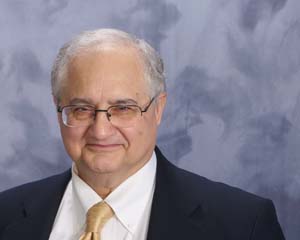Introduction to Distance Education: Theorists and Theories: Verifying Theoretical Concepts
By Farhad Saba, Ph. D.
Founder, Distance-Educator.com
As the field of distance education has grown in the past two decades, new concepts have been introduced to the literature. Authors in scholarly journals and books routinely use words, such as, eLearning, online learning, or web-based education to denote modes or means of learning in which the Internet is used for distance education. Rarely, however, these concepts have been put through the rigorous examination of testing their validity. What is eLearning? If “e” in eLearning stands for “electronic,” then does the use of the telephone, radio or television for teaching an learning fall under the concept of eLearning? If eLearning is unique to learning via the Internet, what are its unique characteristics that sets it apart from the telephone or radio? Can these distinct characteristics be articulated in operational terms? Would we be able to the test their validity as theoretical constructs?
If these terms are to be taken seriously their validity as theoretical constructs must be verified by data-absed and empirical studies. In the series: Introduction to Distance Education, one of the theories that we introduced earlier was “transactional distance” posited by one of the leading theoretician of the field Dr. Michael G. Moore, Distinguished Professor of Education at Pennsylvania State University.
In a study conducted by Shearer and I (1994), we put key theoretical constructs related to the theory of transactional distance to test in order to verify their validity. We developed a dynamic system model that showed the relation between structure and autonomy, and tested the validity of the model in a series of carefully constructed teaching and learning sessions. Learner and instructor interactions in these studies were recorded, and codified through discourse analysis. The numerical value of each transaction was fed into the computer model and the model was run under several assumptions. Our study indicated that there was an inverse relationship between structure and autonomy, and as such transactional distance as it was conceptualized by Dr. Moore, and operationalized and tested by our study is a valid concept.
As in any scientific endeavor, this finding is tentative until evidence show otherwise. But, as long as this observation stands, we can assert that distance in education has a physical attribute that can be measured by miles or kilometers as a fixed entity. It also is a dynamic variable in transactional distance that is different for each learner within the duration of an educational session.
A significant implication of demonstrating the validity of the concept of transactional distance in a system dynamics model is that educational systems of the future must respond to learner differences dynamically as the learning process evolves, and not necessarily based on pre-determined instructional materials. Further, learning is a non-linear phenomenon which can flourish to its full potential in systems that can respond to a learner differentially as time passes. A dynamic and non- linear approach to interaction between learner traits and instructional treatments could also be the key to resolving the issue of confounding variables. A dynamic system that potentially is capable of differentially responding to a learner would include pre-programmed responses as well as synchronous interactions with the instructor, thus limiting or eliminating confounding states.
Individualizing instruction is not a new concept. In the 1960s the idea of adapting instruction to learner differences became the subject of much theoretical speculation and practical application. (Saettler, 1990). A series of research studies in the 1970’s dubbed as aptitude- treatment interaction (ATI) also demonstrated the interaction between instructional attributes (mediated or otherwise) and learner traits. (Salomon and Snow, 1970; Salomon and Snow, 1968; Salomon, 1969, 1971, 1979; Snow and Salomon, 1968; Cronbach and Snow, 1977; Snow, Federico and Montague, 1980.)
However, these studies also revealed that prescribing pre-defined interactions between learner traits and media attributes is not an easy task, since there are potentially unlimited combinations of cognitive, behavioral and affective states with media variables. In 1985 Clark and Salomon presented a comprehensive review of research in media and teaching and called this phenomenon “confounding variables.”
However, the dynamic model of transactional distance provides for emergent behavior of the learner, which theoretically can be prompted by an unlimited combination of learner traits, and media variables in the information rich learning environment of the Internet.
A practical application of this observation is in designing the learning management systems (LMS) of the future. Almost all of the commercial LMSs in use today, such as Blackboard or SumTotal are not designed to differentially respond to the learning states of learners.
Through application of artificial intelligence, learning objects and other similar technologies learning management systems of the future can become more responsive to the learner’s need dynamically. This is not to preclude or eliminate the need for live dialog with an instructor. At points that are different for each learner, s/he would need to engage in a dialog with an instructor, or members of a learning community of peers. The dynamics of synchronous instructor-learner, and learner-learner interaction must be investigated in future research so that instructional designers and instructors can provide optimal and cost effective synchronous interaction while relying on dynamically responsive asynchronous learning activities. As such, the differentiation between distance education and eLearning or synchronous and asynchronous learning is arbitrary and unnecessary in theory or practice.








